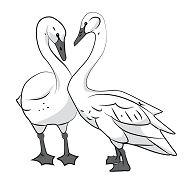The International Union for Conservation of Nature (IUCN) and the Species Survival Commission (SSC) have committed to including fungi in their conservation strategies. Farmers and ranchers too, are recognizing that industrial agriculture has grossly contributed to climate change. Pollution is not only coming from what is spewn into the air by factories and automobiles; it falls upon the bare soil where it is taken up by the plants that we eat. Our soil has become lifeless from the constant tilling, erosion, and the application of herbicides, pesticides, and chemical fertilizers.
Most of the native grasses that provided food for the buffalo and other native herbivores have been eradicated. In addition to soil that has been depleted by farming practises, we have areas where cattle, sheep, and pigs trample and trod upon the ground where they are confined. Instead of being allowed to roam freely, they muck about in pens filled with feces, urine, and mud, where disease is kept in check by injecting them with drugs, hormones, and antibiotics. They are probably eating corn that has been genetically modified, instead of grazing on the plants that they were designed to eat. When the animals have been sufficiently fattened, they are slaughtered and sold to the public.
The ideas of permaculture are spreading. In permaculture design, we have closed loops, where all of the elements in an ecosystem cycle around continuously. As animals and chickens forage and graze, they leave their droppings and continue to move to new areas. In this way the plants are never over grazed and the droppings fertilize the soil for the next generation of plants. As the plants die, they are reabsorbed into the soil, feeding it. The fungi is the communication network moving through the soil, similar to the network in our human brains. It ensures that the proper nutrients are directed to each plant, by communicating with the plant roots. Without fungi, without decaying plant matter, and without animal waste, the soil continues to decline in health. Mycorrhizal fungi, in relationship with trees, can sequester carbon in the soil. We could make great strides in reversing global warming, by putting an end to industrial agriculture and returning to organic and sustainable methods all over the entire globe!



